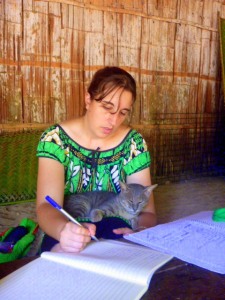When ‘We’ Doesn’t Include You
Person A, Person B and Person C are standing around talking. Person A says to person B, “We are going to the store.” What does person A mean?
- A and B are going to the store, but not C,
- A and C are going to the store, but not B, or
- A, B, and C are all going to the store?
Well…did you figure out the right answer?
If you said #1, you are correct. If you said #2, you are also correct. If you said # 3, you too are correct.

The truth is, person A could have meant anyone of these. The English language doesn’t specify, so we have to rely on context to figure it out. Since I didn’t give you any context, it could have been any one of these three.
However, in the Tiaang language, we don’t have to worry about relying on context. Which ‘we’ we are talking about is built right into the words for ‘we’.
For example, if I am talking to my brother and I say “we (meaning you and I) are going to the store” I would use the Tiaang word ‘itaai.’ But if I am talking to my brother and I say, “we (meaning my friend and I) are going to the store” then I would use the Tiaang word ‘imaai.’

This phenomenon is called Inclusive vs Exclusive We. We learned about this during our formal hour-long language learning sessions that we do every other day in the village. But a lot of language learning happens informally as we live life together.
Check out this video of informal language learning, where we learn about possession and fish scales, among other things, while our host-mother scales a fish for our dinner.
Featured photo shared from dumblittleman.com
